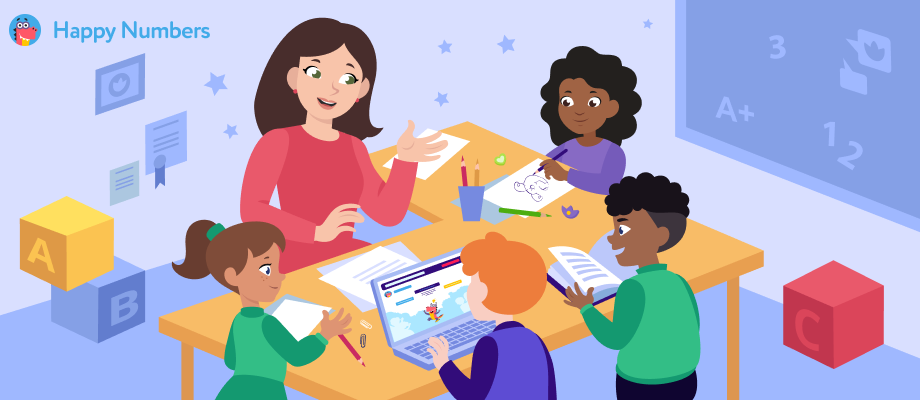Differences Between Online Learning and Offline Learning
The main difference between online and offline learning is location. With offline learning, participants are required to travel to the training location, typically a lecture hall, college, or classroom. With online learning, on the other hand, the training can be conducted from practically anywhere in the world. Participants simply need to log on to the internet from their home, work or even their local coffee shop.
Another difference is the flexibility offered. Online learning usually has a more flexible timescale. As a trainer, you can offer your support via email or through an online chat system. With offline learning, it is typically carried out between office hours and doesn’t offer as much flexibility to the learner or the trainer.
What are the benefits of online vs offline learning?
Although online learning has become the preferred method for the majority of learners, it’s important not to dismiss the benefits of offline training too.
With online training courses, you and the course attendees benefit from a more casual, flexible approach. Being unrestricted in regard to location and times means every learner can benefit from the courses.
With offline learning, it’s easier to ensure attendees are paying attention to the training. Some learners also find it easier to retain the knowledge and skills they’ve learned through offline training than they do with online training.
As there are benefits to both learning options, it makes sense to offer a combined online and offline learning approach as a trainer.
FAQ on Teaching Methodology
What is Teaching Methodology?
Teaching methodology refers to the approach that educators use to teach their students. It involves the combination of various techniques, strategies, and activities that aim to improve student learning outcomes.
What is the best teaching method?
The best teaching method depends on the subject matter, the goals of the lesson, and the learning styles of the students. Each method has its strengths and weaknesses, and the most effective teaching approach often involves a combination of methods.
How do I know which teaching method to use?
Consider the subject matter, the goals of the lesson, and the learning styles of the students. Experiment with different methods and ask for feedback from your students to find the most effective teaching approach.
Can I use multiple teaching methods in one lesson?
Yes, using multiple teaching methods in one lesson can help to engage students with different learning styles and promote a deeper understanding of the material.
What are the Different Teaching Methodologies?
There are several different teaching methodologies, including:
Lecture-Based Teaching
Collaborative Learning
Project-Based Learning
Flipped Classroom
Inquiry-Based Learning
Experiential Learning
Problem-Based Learning
How to Choose the Best Teaching Methodology?
Choosing the best teaching methodology depends on several factors, including the learning objectives, the student’s learning style, the subject matter, and the resources available. Educators should choose the most appropriate methodology that aligns with their student’s needs and learning goals.
What is the Importance of Teaching Methodology?
The teaching methodology is essential for effective teaching and learning. It helps educators to deliver their content in a way that is engaging, interactive, and meaningful to their students. It also enables them to personalize their teaching approach to cater to their student’s individual needs.
What are the Advantages of Using Different Teaching Methodologies?
Using different teaching methodologies has several advantages, including:
Enhanced student engagement
Improved student motivation
Increased student participation
Greater retention of information
Improved critical thinking skills
Increased collaboration and teamwork
What are the Disadvantages of Using Different Teaching Methodologies?
Using different teaching methodologies also has some disadvantages, including:
Time-consuming preparation and implementation
Possible resistance from students who prefer traditional teaching methods
Need for sufficient resources, such as technology and materials
Potential for ineffective implementation if not executed correctly
How Can Teachers Implement Teaching Methodologies in Their Classrooms?
Teachers can implement teaching methodologies in their classrooms by following these steps:
Identify the learning objectives and student needs
Choose the most appropriate methodology
Prepare the necessary resources and materials
Implement the methodology effectively
Evaluate the effectiveness of the methodology
What are the Key Elements of Effective Teaching Methodology?
Effective teaching methodology should include the following key elements:
1. Clear learning objectives
2. Active student engagement
3. Relevance to real-life situations
4. Appropriate assessment and evaluation methods
5. Opportunities for feedback and reflection
What is the Role of Technology in Teaching Methodology?
Technology plays a vital role in teaching methodology, allowing educators to deliver content more effectively and efficiently. It also enables them to personalize their approach to cater to their student’s individual needs, provide interactive and engaging learning experiences, and offer access to a vast range of online resources and tools.
How to Evaluate the Effectiveness of Teaching Methodology?
Evaluating the effectiveness of teaching methodology is crucial to determine whether it is achieving the desired learning outcomes. It involves collecting data on student performance, engagement, and satisfaction, and analyzing this data to identify areas for improvement.
What is the Difference Between Teaching Methodology and Pedagogy?
Pedagogy refers to the broader concept of teaching and learning, while teaching methodology is a specific approach to teaching that educators use to achieve their pedagogical goals. The teaching methodology is a subset of pedagogy, which also encompasses other aspects such as curriculum design, assessment, and evaluation.
What is the Future of Teaching Methodology?
The future of teaching methodology is likely to involve a greater emphasis on technology-enabled learning, personalized learning approaches, and student-centred teaching. As technology continues to evolve, educators will have access to a wider range of tools and resources to deliver more effective and engaging learning experiences.
What are Some Common Myths About Teaching Methodology?
Some common myths about teaching methodology include:
1. There is a one-size-fits-all approach to teaching
2. Technology can replace traditional teaching methods entirely
3. Lecture-based teaching is outdated and ineffective
4. Student-centred teaching is always the most effective approach
Can a single teaching methodology be effective for all subjects?
No, a single teaching methodology may not be effective for all subjects, as different subjects require different teaching approaches. For example, the inquiry-based approach may be more effective for science and math, while the discussion-based approach may work better for social studies and literature. Educators should choose the teaching methodology that aligns with the subject matter and learning goals.
How important is student feedback in evaluating teaching methodology effectiveness?
Student feedback is crucial in evaluating teaching methodology effectiveness, as it provides insight into what is working and what needs improvement. Educators should regularly gather feedback from their students and use it to make changes to their teaching approach. By incorporating student feedback, educators can improve learning outcomes and increase student engagement.
How can teachers effectively integrate technology into their teaching methodology?
Teachers can effectively integrate technology into their teaching methodology by choosing tools and resources that align with their teaching goals and students’ needs. For example, they can use educational apps and online resources to provide engaging and interactive learning experiences. Teachers should also ensure that students have access to the necessary technology and receive adequate training on how to use it.
What is the role of the teacher in student-centred teaching methodology?
In student-centred teaching methodology, the role of the teacher is to facilitate learning and provide guidance and support to students. Teachers should encourage students to take responsibility for their learning and provide opportunities for collaboration and self-directed learning. The teacher’s role is to create a supportive learning environment that empowers students to take ownership of their learning and achieve their full potential.
Conclusion
Teaching methodology plays a vital role in delivering effective and engaging learning experiences for students. By understanding the different methodologies available and choosing the most appropriate approach for their students’ needs, educators can improve learning outcomes and student engagement. By staying updated on the latest teaching methodologies and techniques, educators can continue to enhance their teaching practice and deliver the best possible learning experiences for their student




